Whitening toothpastes
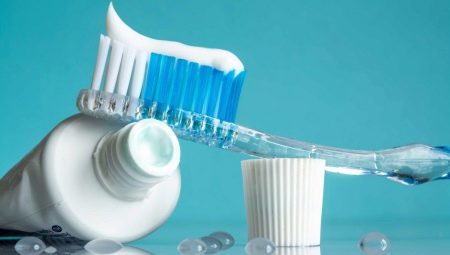
Dental services in terms of teeth whitening remain very popular, however, even after such a procedure, you need to maintain a snow-white smile, and whitening toothpastes will help in this. We will tell you about what such remedies are, who are suitable for whom, and how to choose a suitable composition for whitening teeth.
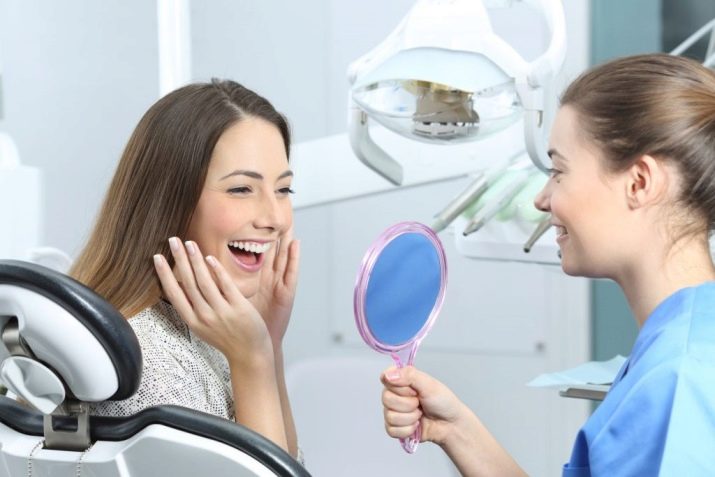
Peculiarities
The difference between whitening toothpastes and conventional therapeutic and prophylactic agents is that the whitening compounds remove pigment deposits from the enamel layer. Such pollution is constantly formed among those who smoke a lot, love wine, who often drink tea or coffee.
Conventional pastes with pigment plaque cannot cope, they only remove bacterial plaque well. In whitening compositions, there is something that is not in conventional toothpastes: abrasive particles or carbamide, hydrogen peroxide or other whitening substances.
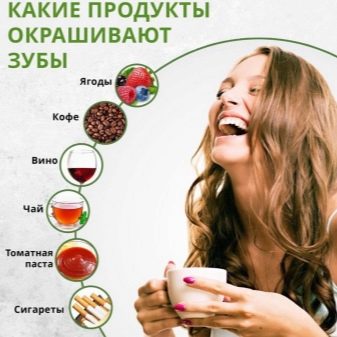
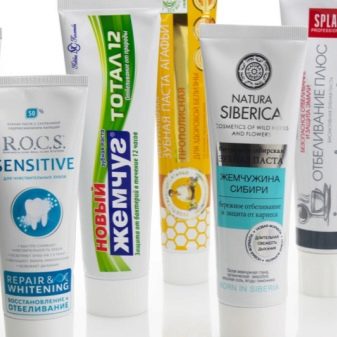
The main feature of whitening pastes is that special components act on the tooth enamel, brightening it. This happens in different ways.
- Mechanically, when plaque is removed by using pastes with abrasives. It is not recommended to use abrasive pastes for caries, if there are braces or crowns in the mouth.
- By neutralizing pigment from the surface of the teeth due to the effect of compounds in which, in addition to abrasive substances, there are also enzymes. Not suitable for pregnant women, nursing mothers, people with sore gums and impaired teeth sensitivity.
- Plaque cleansing occurs due to active oxygen. Such pastes are the safest and most effective.
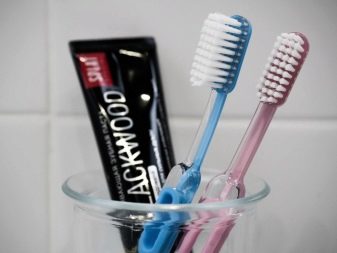
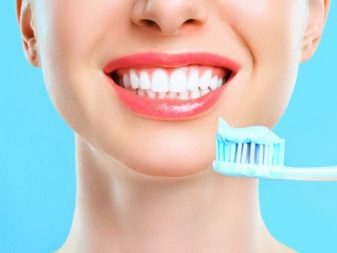
Pastes with active oxygen quickly give a result, but since they penetrate into microcracks, pay attention that such a product does not contain carbamide peroxide if you have a disorder with your teeth (there is caries or too large cracks on the enamel).
Limitations and contraindications
Before using teeth whitening products, be sure to read the instructions for use, the composition of the paste and consult your dentist... It is necessary to take into account the individual characteristics of your own dental system and the characteristics of the whitening toothpaste.
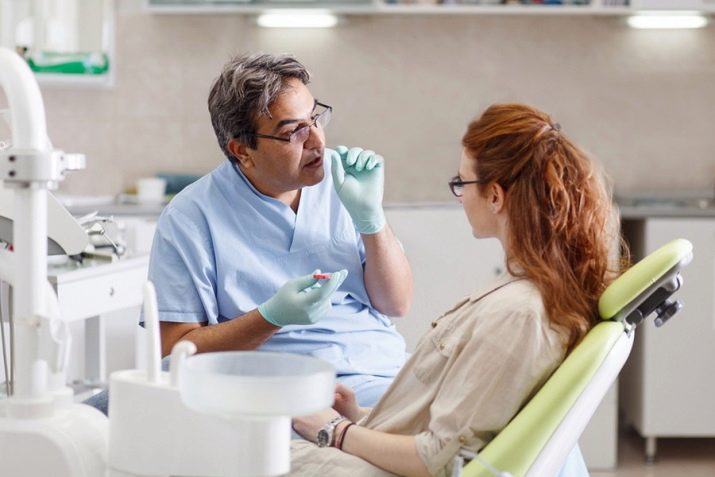
With a sensitive and thin enamel layer, pyrophosphate products will be harmful to your teeth. In this case, pastes containing polydones and enzymes will be more beneficial. If bleach products are used more often than manufacturers recommend, they will likely cause more harm than good.
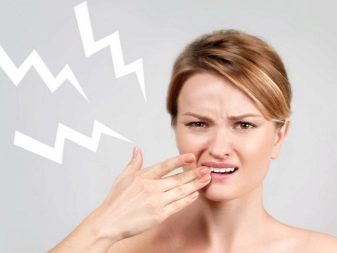
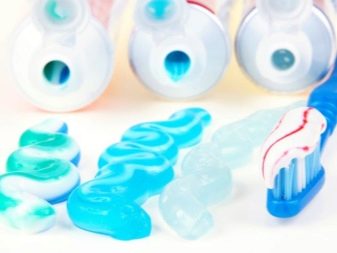
When your gums are inflamed, bleaching agents can further irritate the gums and cause bleeding. And also when there are cracks in the enamel, brushing teeth with whitening pastes can only increase sensitivity.
Therefore, before you start whitening your smile, first cure concomitant diseases of the gums and teeth.... And pay attention to the recommendations: at what age to apply the composition, is it possible for pregnant and lactating women, and more.
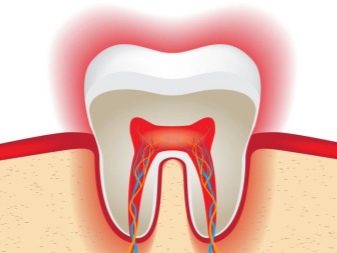

Usually, the recommendations of professionals boil down to the fact that whitening pastes, which contain chemicals, should be used only from the age of 16. You should not whiten your teeth if you have an orthodontic structure in your mouth in the form of plates, braces, and the like.
It will be possible to start the whitening process after the end of treatment with the permission of the attending physician... Well, and if you are prone to allergies, then carefully study the composition - both products based on herbal ingredients and with chemical components can cause an allergic reaction.

Views
There are different types of tooth whitening pastes, depending on the composition. There are safe, created on a natural basis with herbal ingredients, and there are products with chemical additives. Accordingly, it is both more gentle and aggressive cleaning.
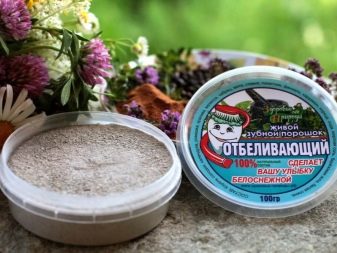

The first options are more suitable for sensitive teeth, but if we talk about effectiveness, then the second ones give better results - these are already professional remedies, and it is advisable to consult a doctor before using them.
Let's consider in detail the most common types of whitening pastes.
With polishing and abrasive particles
Such pastes not only cope with the pigmented plaque on the teeth formed from smoking, frequent consumption of tea and coffee, but also give the enamel a polishing effect and smoothness. However, in this case professionals don't call it whitening.


Simply by removing dirt, the surface of the teeth becomes cleaner to a natural color. To increase the cleaning efficiency, it is better to go to the dentist before using such pastes and go through a procedure to remove hard deposits.
A toothpaste with coarse abrasives is a poor quality product. Such a composition only harms the enamel. A quality product from this category should contain small abrasive particles, and should also be enriched with useful substances (including plant origin) and minerals - all this will allow for a gentle gentle cleansing and strengthen the enamel.
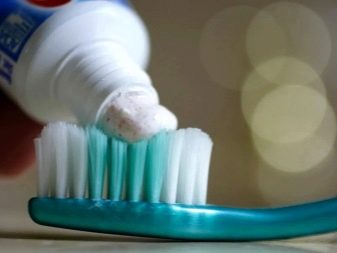
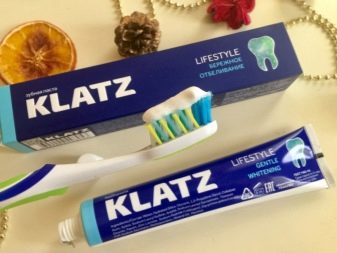
With chemical additives
These pastes, due to the chemicals contained in the composition, quickly destroy or discolor the pigment film on the enamel of the teeth. If you have heard of such a method as oxygen bleaching, then this is just the case when the paste contains, for example, hydrogen peroxide.
The named component releases active oxygen, which gives the enamel the desired whiteness. And yes, this is the case when not only teeth are whitened, but also fillings (most whitening pastes cannot cope with this).Therefore, if we are talking about acquiring a snow-white smile, and there are sealed areas in front, then choose such pastes.
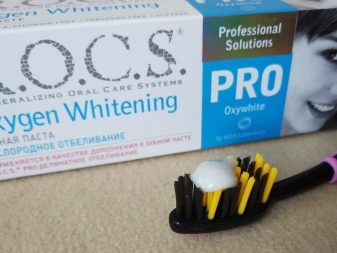

They will quickly lead you to the desired result, but do not overuse these agents so as not to damage the enamel (chemical elements can corrode the enamel layer with prolonged exposure to teeth).
Based on carbamide peroxide
In this case, we are also talking about oxygen bleaching, since the main component of such a paste is carbamide peroxide, when it comes into contact with saliva, light and air flows, it releases active oxygen. As a result, the enamel is whitened, and such whitening is comparable to chemical whitening.
The effect of a bright smile is simply gorgeous, but you can provoke sensitivity of the teeth. Therefore, use such a paste. carefully: if there are chips and cracks on the surface of the teeth, it is better to give up until the problems are healed.

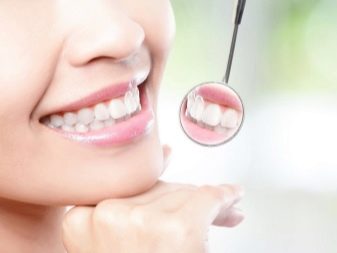
Well, only your teeth will be able to whiten a paste based on carbonate peroxide. It will not affect the shine of dentures, crowns or veneers. And one more important rule: when brushing your teeth, such a composition should not be in the mouth for long, otherwise burns of the oral cavity cannot be avoided.
Combined
A category indicating that such pastes have a combined composition. The most common are those that combine chemicals and abrasive particles. As a result, a powerful composition is formed that can change the tone of the teeth by 2-4 tones.
In addition to the lightening process, combined pastes can help remove tartar and bacterial plaque.

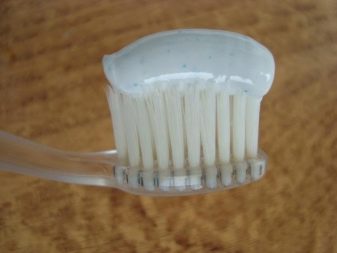
Given the strong composition, such pastes are used in courses, for example, they use them for a month and a half, then take a break for up to 2 months.
Such combined formulations give the fastest results in teeth whitening, but it is imperative to follow the recommendations of dentists and manufacturers. There are whitening pastes of this category in the lines of brands New Pearl, Colgate, Sensodyne, Aquafresh and other toothpaste manufacturers.
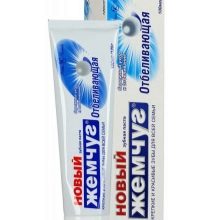
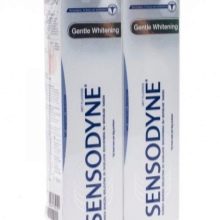

How to choose the right one?
Before moving on to using whitening pastes, visit your dentist's office and check the general condition of your teeth and gums. Suddenly, at this stage, you do not need whitening products, and the doctor will recommend therapeutic and prophylactic formulations.
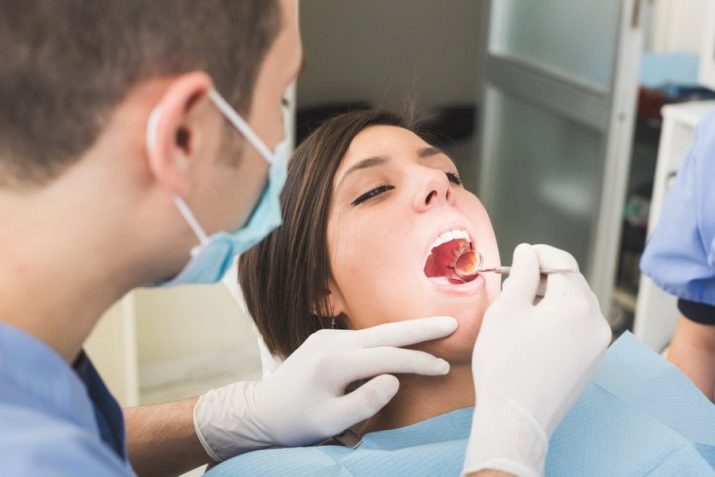
In this case, you need listen to the recommendations of a professional, so as not to further destroy the teeth and aggravate the situation with the gums. If the dentist approves of your desire to have a snow-white smile, for greater effect, first take hygienic measures to cleanse the entire oral cavity, as well as sanitize.
Remove hard plaque (tartar) in the dentist's chair, as the whitening compound will not do the trick. Carefully read the information on the package, and only then purchase it depending on your goals and the result you want to get.
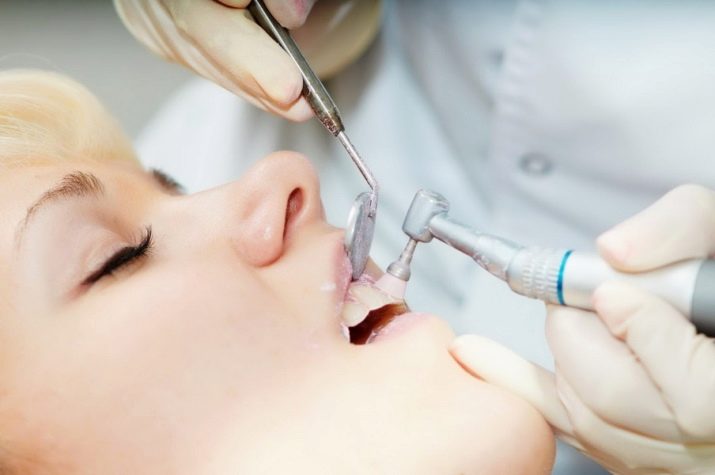
Clearly define your goal: you really want to whiten the enamel layer into several shades, or you just have a desire to get rid of pigment plaque after a long use of tea, coffee, tobacco, in order to achieve naturalness.
Please note that the degree of abrasiveness in whitening pastes should not exceed 25-30 RDAif the enamel is thin and the teeth are sensitive to temperature and taste changes. Normal healthy teeth can withstand 60-80 RDA abrasive compounds.
If you really want to whiten your teeth, then you need a highly abrasive paste (up to 200 RDA). But do not overuse such a composition, brush your teeth with it no more than 2-3 times a week, combining with pastes that contain abrasive components at the level of 80 RDA.

The main thing in choosing a whitening paste should be the composition, and not the price, brightness of the package or the brand. When choosing, you must have an idea of the condition of your teeth. Based on this, you will need a paste for daily care or limited use - when choosing, read the instructions from the manufacturer.

Rating of the best
In the top of the most effective tooth whitening pastes, there is also a black one. As it turned out, EXXE with coal from a Russian manufacturer is not inferior in quality to white compositions and gives the same effect. Experts advise to draw the attention of smokers to this paste, since it contains anti-tartar components that get rid of persistent yellowness on the teeth.
In the rating of the best means for a snow-white smile, not only Russian products, but also Japanese, American, Vietnamese toothpaste manufacturers, as well as their competitors from other countries, represent their products. Let's present some specimens separately, dividing them by types.
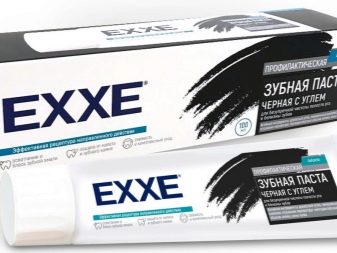
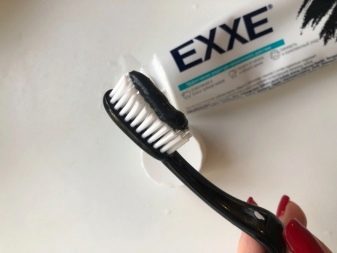
Soft action
Means of mild action include those pastes that are able to give the effect of delicate gentle teeth whitening.
-
Indian product of the Himalaya brand - toothpaste without chemicals. It contains no fluorides, gluten, SLS, carrageenans and other chemicals. Gentle cleansing and whitening is provided by an exclusively herbal formula that includes the following natural ingredients: mint extract, papaya enzyme, pomegranate, pineapple, neem leaves and others. Himalaya paste will relieve inflammation, have a tonic effect and provide natural teeth whiteness.
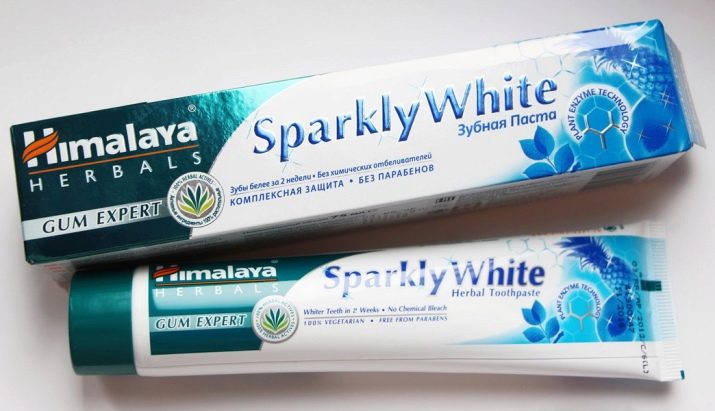
- Powersmile (vanilla mint paste) from the American brand Jason Natural... In the composition there are no artificial dyes and GMOs, there are no elements harmful to enamel (gluten, fluorine, sulfates, etc.), only raw materials of plant origin are used. The presence of soda and calcium in the composition contributes to soft lightening and strengthening of teeth. This paste can be used regularly. It is harmless and safe, mint and vanilla extracts leave freshness and a pleasant aftertaste in the mouth for a long time, and grapefruit seed and perilla oils neutralize the effects of eating sweets. Thus, with regular use of Powersmile, in addition to a dazzling smile, you will forget about tartar and any plaque on your teeth.
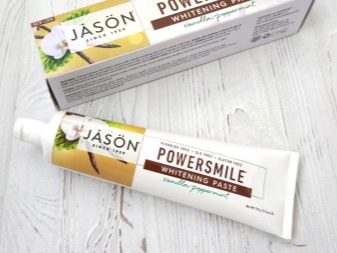
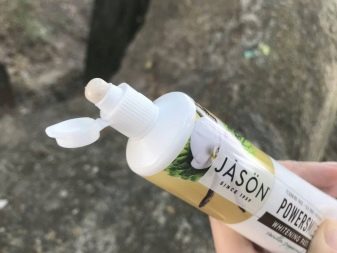
With carbamide peroxide
Such pastes whiten even hard-to-reach places, as well as fillings, implants, crowns. They are more effective than pastes, which only neutralize pigment, but they should not be used by women who are expecting a baby or nursing mothers.
Suitable for adults only (from the age of majority). Let us consider in detail some examples of bleaching compositions with carbonate peroxide or hydrogen peroxide with the effect of oxygen bleaching.
-
R. O. C. S. Pro Oxywhite. Due to the polyethylene content, the paste has the consistency of a gel. A fluoride-free product, in a month (no longer needs to be used), will make your teeth 2 tones whiter, but only if you are not a heavy smoker or coffee lover. In this case, you will need to look for other formulations: R. O. C. S. Pro Oxywhite will not be able to 100% cope with tobacco or coffee bloom.

- White Plus by Faberlic with silicic acid, papain, and also with polyvinylpyrrolidone. This paste removes pigment plaque and makes tooth enamel whiter by half a tone. Fluoride free, affordable for consumers, but sold in a small tube.
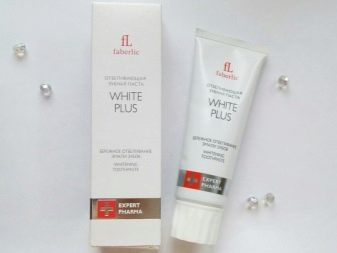
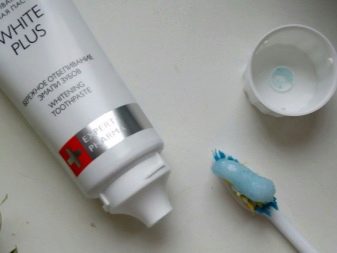
- Splat extreme white complex action. Contains fluoride (500 ppm) and silicon. Well dissolves hard plaque from teeth (removes tartar). The paste can cause bleeding of the gum tissue, so it is better not to use it for those with "loose" gums. And in general, it whitens the enamel quite carefully, supplying it with the necessary minerals. The composition contains preservatives.
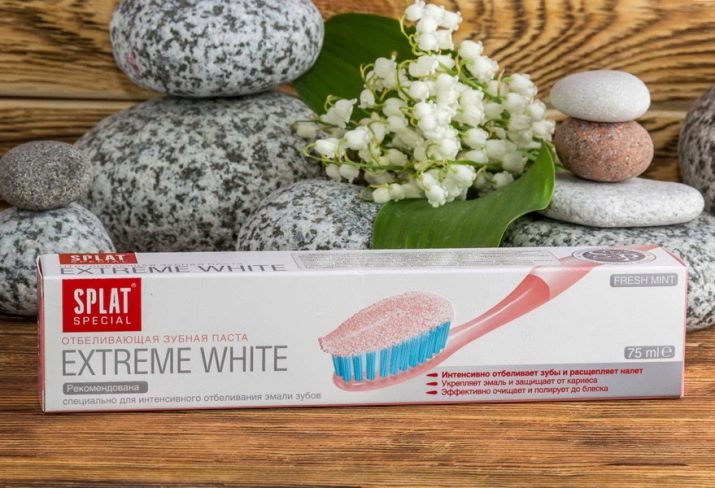
Highly abrasive
This category of whitening toothpastes will restore the light surface of the tooth enamel in case of abuse of smoking, with a love for strong drinks in the form of tea and coffee. Remember that they use highly abrasive compounds only when the teeth are completely healthy, otherwise the sensitivity will only increase, and so will the pain.
In the rating of such pastes, we note a number of products.
-
PRESIDENT White Plus containing abrasive particles (calcium carbonate, titanium and silicon dioxides and others). Abrasiveness index - 200 RDA.The paste does not contain fluoride, it is quite tough, but it has a substance that allows you to mineralize the enamel. This is possible due to calcium glycerophosphate. Lightening of the teeth can be seen after the second application. In general, the paste makes tooth enamel several shades whiter, but dentists recommend brushing your teeth with it only once a week. It is imperative to follow this advice, otherwise there will be problems with the enamel: it will become thinner, and the teeth will become sensitive to hot and cold, sour and sweet. The Italian manufacturer of this paste honestly writes that PRESIDENT White Plus contains a preservative and may cause an allergic reaction.
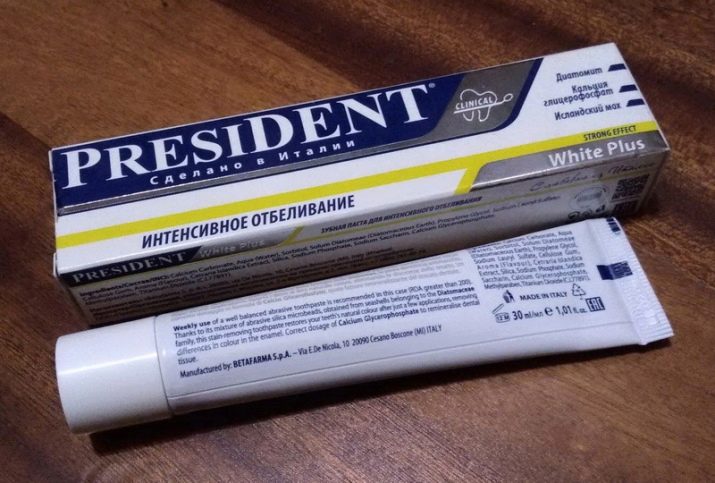
- Blend-a-med 3D WHITE LUXE from a well-known German manufacturer. Of the abrasives in the composition of the paste, only silicic acid, with an RDA of 100. Suitable for any age, but attention: it contains fluorine, and this should alert those who avoid this element or live in the corresponding regions. The paste is economical to use, it dyes the brush blue, which should not alarm users. As a result, it effectively whitens tooth enamel and refreshes the oral cavity.
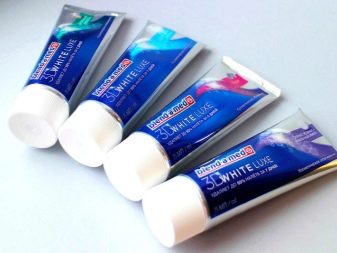

- Rembrandt (anti-coffee and anti-tobacco) with a low content of abrasive components, which makes cleaning your teeth more gentle and longer use. That is, it can be used longer than similar products, in which the degree of abrasiveness is higher. Rembrandt effectively removes pigment plaque, ensures enamel whiteness, prevents caries from developing, has a firming effect on the gums, is absolutely safe. The only drawback of this paste is that it is not cheap.
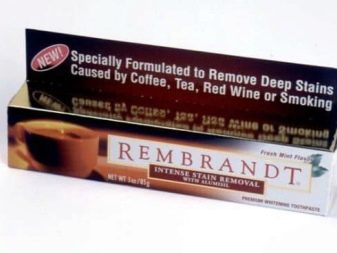
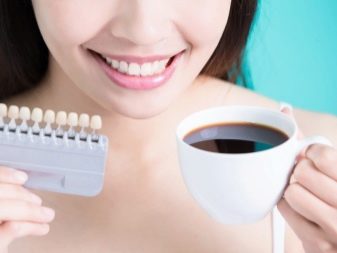
How to use?
Whitening pastes are designed primarily to maintain the natural color of your teeth at home. Products with chemicals also whiten enamel, but they cannot be used constantly. As a rule, you can brush your teeth with whitening pastes no more than 2 days a week.
Sometimes it is possible to do this more often, but then in the morning, for example, they brush their teeth with a whitening paste, and in the evening they use a remedy with herbal extracts from the Forest Balsam series and others. The alternation of pastes will allow you not only to have a snow-white smile, but also to solve other problems of the dentition.
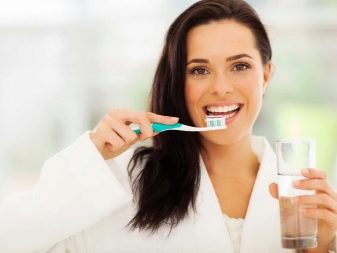
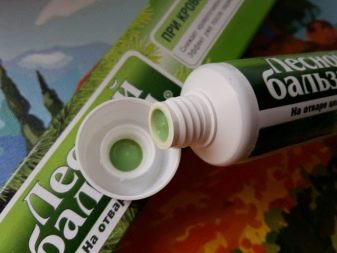
Do not forget to read the instructions and rules for using toothpastes from the manufacturer. If you feel very sensitive after brushing your teeth, stop using this product, switch to a product with a high mineral content, with fluoride and calcium.
In order not to damage the enamel even more, you may have to be content with just removing the pigment layer in order to achieve a natural color on your teeth instead of whitening and discoloration in several tones.

Review overview
In the reviews of those who have used whitening pastes, you can hear different opinions about their effect. Someone really saw the result and thinks bleaching in this way at home is just a great idea, and someone relies on the opinion of dentists, performs professional cleaning in dental offices, only after that only with whitening pastes maintains the state of the enamel at the proper level.

Most consumers have noticed that pastes with abrasiveness do not whiten teeth, but only remove surface plaque, but with a chemical composition, they can increase whiteness even by 2 tones. And one more thing: as smokers and coffee lovers note, whitening pastes are ineffective for them. Only by quitting smoking and not drinking your favorite drink so often can you boast of the whiteness of your teeth.
In general, as most buyers note, whitening toothpastes are a good solution in order to maintain the whiteness or naturalness of the enamel. Consumers are eager to buy them. True, they emphasize that the expectations from advertising of these funds do not always coincide with the real result - advertisers still slightly exaggerate the capabilities of the product.
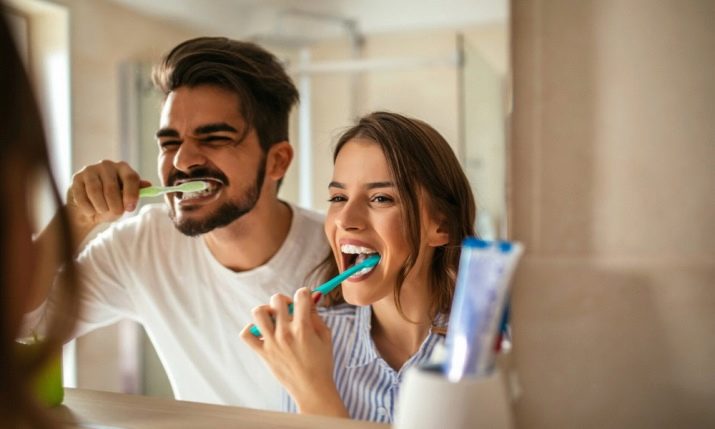
For the quality and effectiveness of whitening toothpastes, see the following video.








